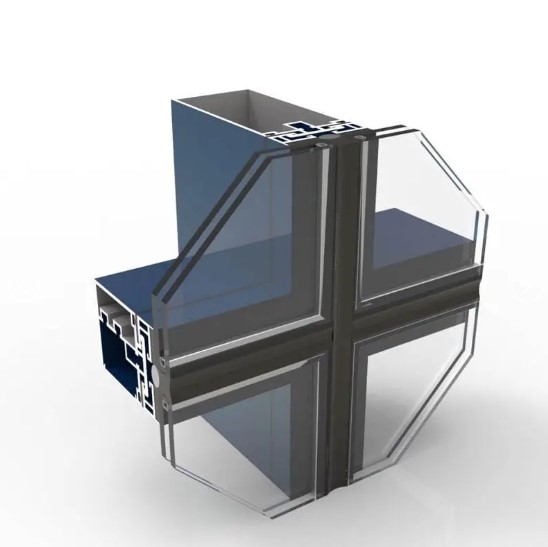
Curtain walls are a popular architectural feature in modern buildings. They are essentially the outer skin of a building, consisting of non-structural, lightweight panels that are typically made of glass, metal, or stone. The primary function of a curtain wall is to protect the interior of the building from the elements while also providing a visually appealing facade. However, with rising concerns about construction safety, many people are wondering if curtain walls are safe.
Curtain walls are a sort of facade system that is commonly employed in modern structures. They are often built of lightweight panels that are affixed to the building's structure. The panels are often composed of glass, metal, or stone and are intended to act as a barrier between the inside of the structure and the outside environment. Curtain walls are often erected on the exterior of a structure, which exposes them to numerous weather variables such as wind, rain, and snow.
The safety of curtain walls is a topic of much debate in the construction industry. On one hand, curtain walls can provide a number of benefits, including improved insulation and energy efficiency. However, they can also pose a number of risks if they are not properly designed, installed, and maintained.

One of the primary concerns when it comes to the safety of curtain walls is their ability to withstand wind loads. Curtain walls are typically installed on the exterior of a building, which means that they are subject to various wind loads. These wind loads can be significant, especially in areas with high wind speeds.
A curtain wall must be built to resist the wind loads that it will be subjected to in order to be safe. This usually entails a thorough examination of the building's location as well as an evaluation of the projected wind speeds in the vicinity.
Another concern when it comes to the safety of curtain walls is their ability to withstand fire. In the event of a fire, the curtain wall can act as a chimney, allowing the fire to spread quickly throughout the building. This can be especially dangerous in tall buildings, where the fire can spread rapidly from floor to floor.
To address this concern, many building codes require that curtain walls be constructed with fire-resistant materials. These materials are designed to resist the spread of fire, which can help to prevent it from spreading throughout the building.
In addition to fire-resistant materials, curtain walls may also include fire-rated glass. Fire-rated glass is designed to withstand high temperatures for a certain amount of time, which can help to prevent the spread of fire.

Proper maintenance is also critical when it comes to the safety of curtain walls. Over time, seals and gaskets can deteriorate, which can lead to water and air infiltration. This can not only compromise the energy efficiency of the building but can also lead to more serious issues such as mold growth and water damage.
Regular inspections and maintenance are thus required to ensure that the curtain wall is correctly operating and that any concerns are rectified as soon as possible. This includes assessing the panels for cracks or damage, testing the seals and gaskets for wear, and ensuring that the brackets and clamps are appropriately fastened.
Curtain walls, when properly planned, constructed, and maintained, may be a safe and effective facade solution. Looking for a high-quality glass curtain wall, contact XIANGZHEN without hesitation today!